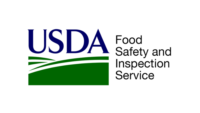USDA's Food Safety & Inspection Service (USDA-FSIS) is conducting two quantitative risk assessments—one for Salmonella in chicken and one for Salmonella in turkey. The risk assessments will answer the following risk management questions:
- What is the public health impact (change in illnesses, hospitalizations, and deaths) achieved by eliminating at receiving a proportion of chicken (or turkey) contaminated with specific levels of Salmonella and/or specific Salmonella subtypes?
- What is the public health impact (change in illnesses, hospitalizations, and deaths) achieved by eliminating final product contaminated with specific levels of Salmonella and/or specific Salmonella subtypes?
- What is the public health impact of monitoring/enforcing process control from re-hang to post-chill? Monitoring could include analytes such as Enterobacteriaceae, Aerobic Plate Count, or other indicator organisms, analysis could include presence/absence or levels and the monitoring could also include variability of actual result versus expected result, log reduction, absolute sample result, or other individual establishment specific criteria.
- What is the public health impact of implementing combinations of the risk management options listed above?
Risk management questions reflect the information needed to evaluate and compare the public health benefits of policy options for controlling Salmonella in poultry. These questions are developed when planning risk assessments and are used to guide the development of risk models that are “fit-for-purpose,” i.e., designed to provide relevant information useful for weighing the public health benefits of policy options.
Additional information on conducting food safety risk assessments and the role of risk management questions is available in FSIS’ Microbial Risk Assessment Guideline.
Source: USDA-FSIS



Report Abusive Comment